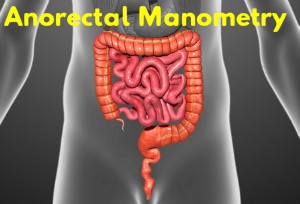Anorectal Manometry Terms
Anorectal Manometry - Anorectal manometry is the basic examination for studying anorectal function. It allows the objective evaluation of the barrier pressure generated by sphincter contraction, rectoanal inhibitory reflex, and rectal sensitivity and compliance. It is typically used in the diagnosis of causes for fecal incontinence or chronic constipation.

Balloon Expulsion Test - The balloon expulsion test is part of typical anorectal manometry diagnostic procedures. The balloon expulsion test is a useful screening test for a functional defecation disorder, but it does not define the mechanism of disordered evacuation. In this test, a latex balloon is filled with a small amount of warm water or air within the rectum. The patient is asked to expel the balloon in a private bathroom.
CPT Codes - In the context of Anorectal Manometry certain CPT codes are applicable and reimbursable. CPT Codes are used by Medicare, Medicaid, and private insurance to standardize insurance reimbursement rates. The applicable CPT codes for anorectal manometry often include:
- 91120 - Rectal sensation, tone, and compliance
- 91122 - Anorectal Manometry
- 51784 - Electromyography
- 51792 - Urinary reflex study
Endoscopy - Endoscopy is a non-surgical procedure used to examine a person's digestive tract. Using an endoscope, a flexible tube with a light and camera attached to it, your doctor can view pictures of your digestive tract on a color TV monitor.
Endoscopy Center - Anorectal manometry is often performed inside an endoscopy center. An endoscopy center is an area of a hospital or gastroenterology practice that focuses on gastrointestinal diagnostics such as anorectal manometry, anal endoscopy, and esophageal endoscopy.
Fecal Incontinence - Fecal incontinence is the inability to prevent loss of stool from the anus until desired. Fecal incontinence is the second most common cause of institutionalization in elderly persons
Rectal Compliance - Rectal compliance is the capacity of the rectum to accommodate different volumes without great alteration in rectal pressures. Therefore, rectal compliance is responsible for the degree of urgency for evacuation.
Rectal Sensation - In the context of anorectal manometry the lowest volume of air that evokes a first sensation, a desire to defecate, urgency, or discomfort during intermittent distention. It is measured by filling a small balloon in the rectum with gradually increasing amounts of water or air and recording the volume at which the patient first feels the balloon, when they desire to defecate, and the point of maximum tolerated volume.
Rectoanal Inhibitory Reflex - Rectoanal inhibitory reflex is the combined result of the antagonistic actions of the external and internal sphincters. It is the normal relaxation of the internal sphincter in response to rectal distention.
Rectoanal Reflex Activity - Rectoanal Contractile Reflex is the transient contraction of the anal sphincter in response to a transient rise in intra-abdominal pressure (e.g. when coughing) to prevent defecation we straining.
Squeeze Pressure - Squeeze pressure is measured during anorectal monometry procedure at several points during the test. Maximum squeeze pressure is the highest pressure maintained by squeezing the anal canal. Relaxed squeeze pressure is the baseline pressure in the anal canal when the patient is relaxed.
